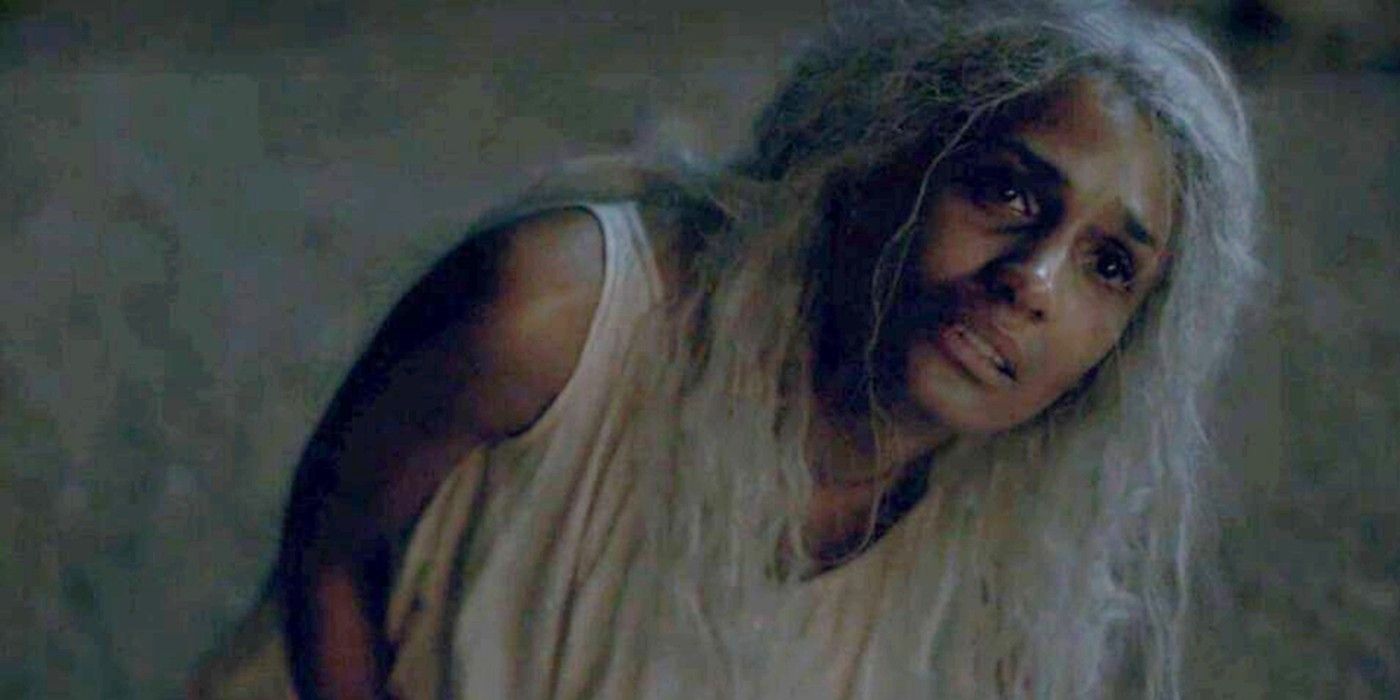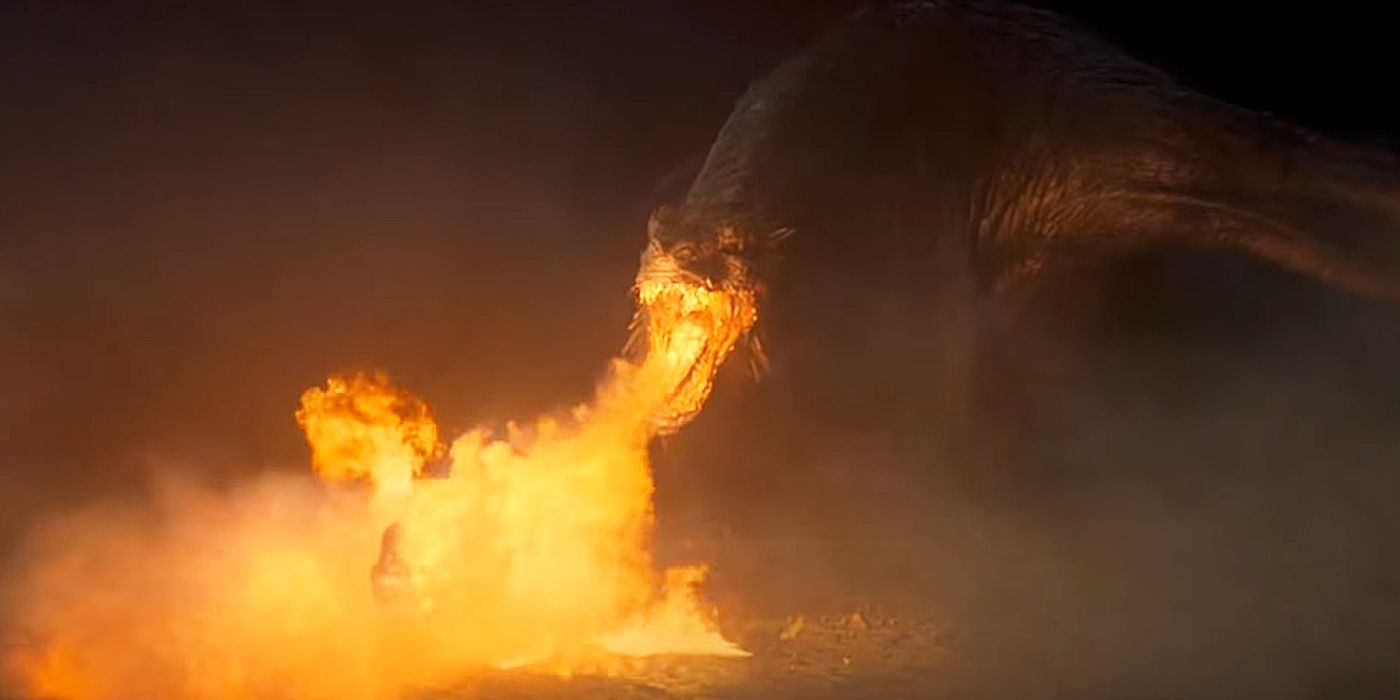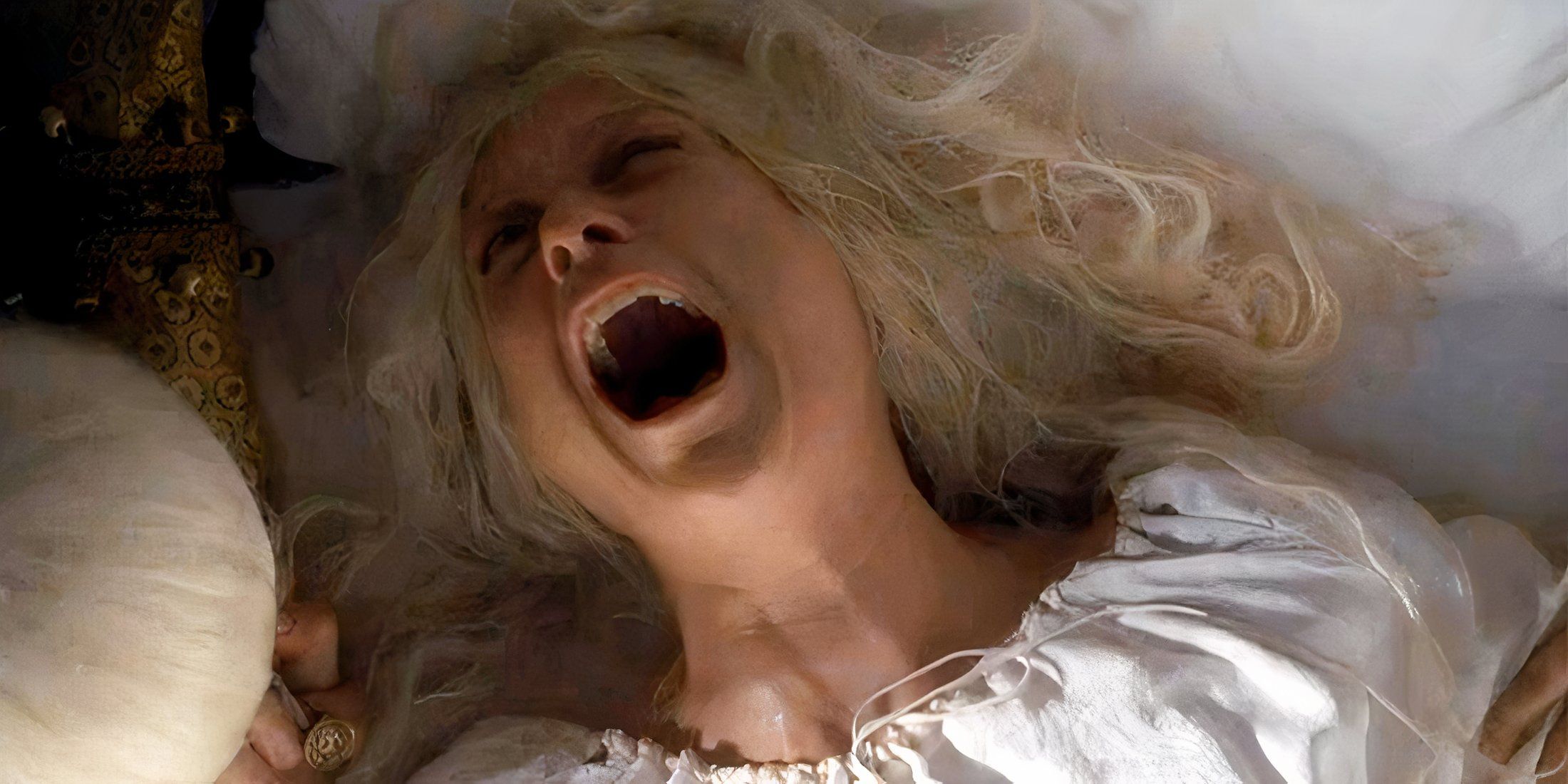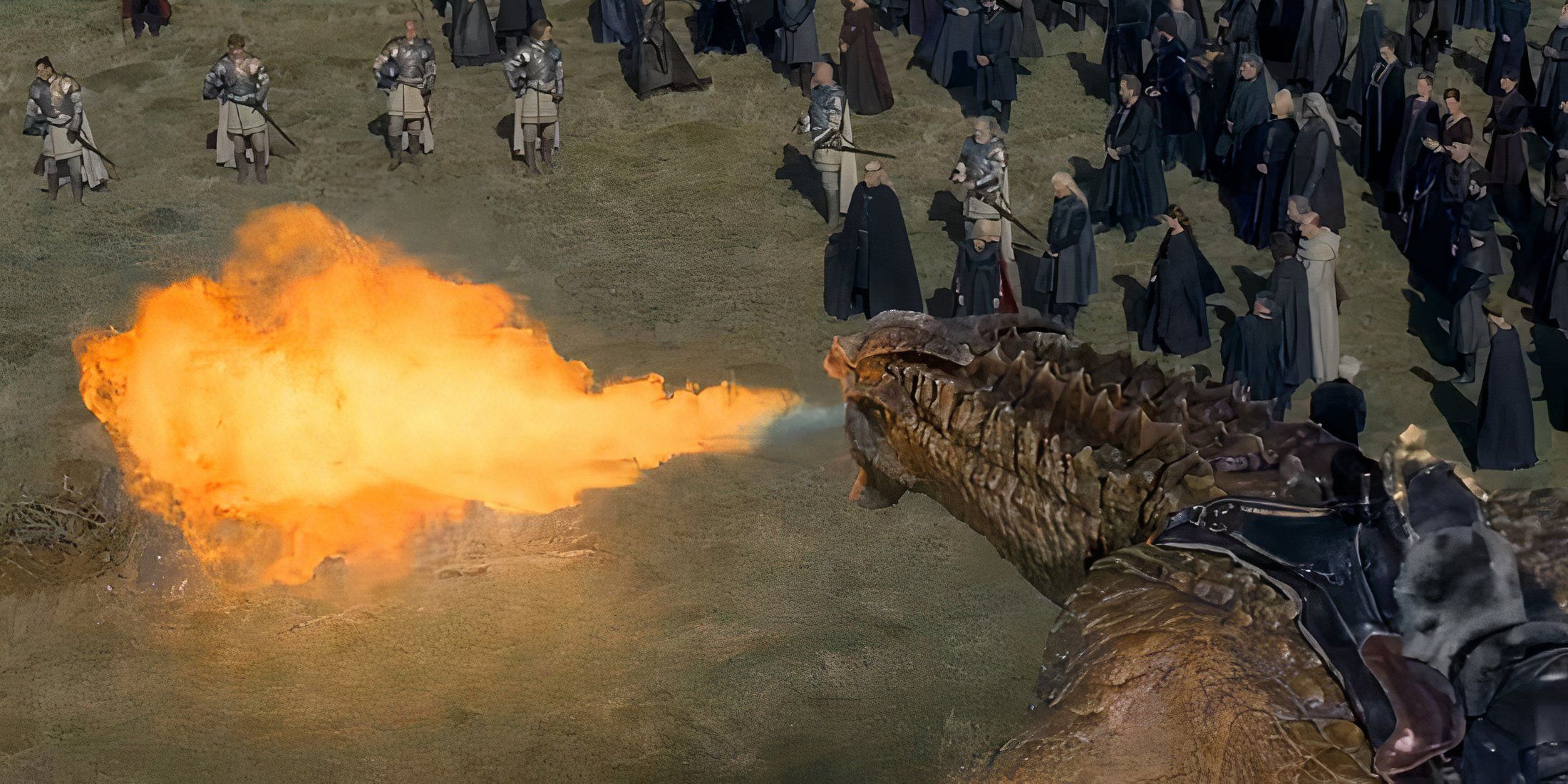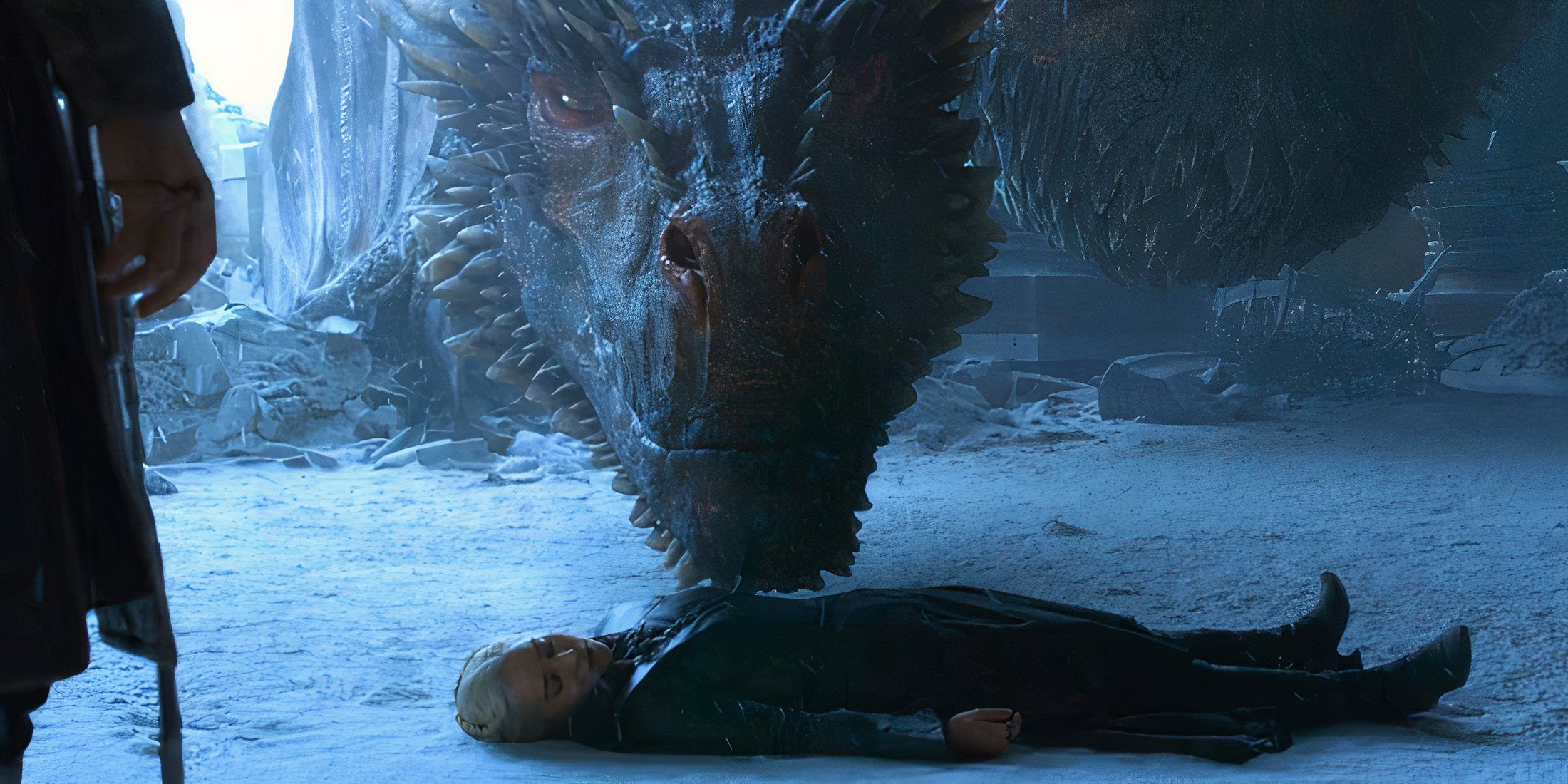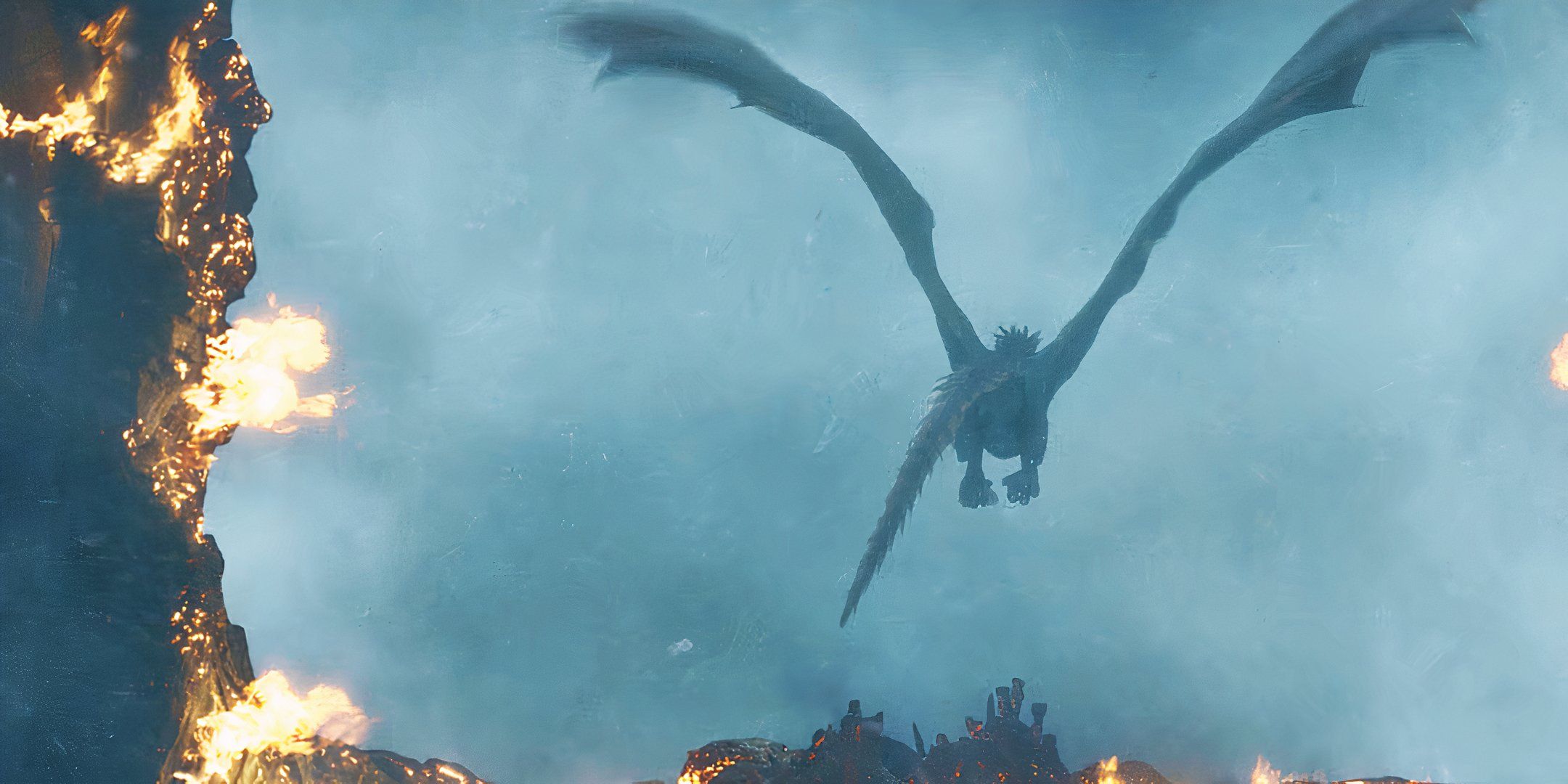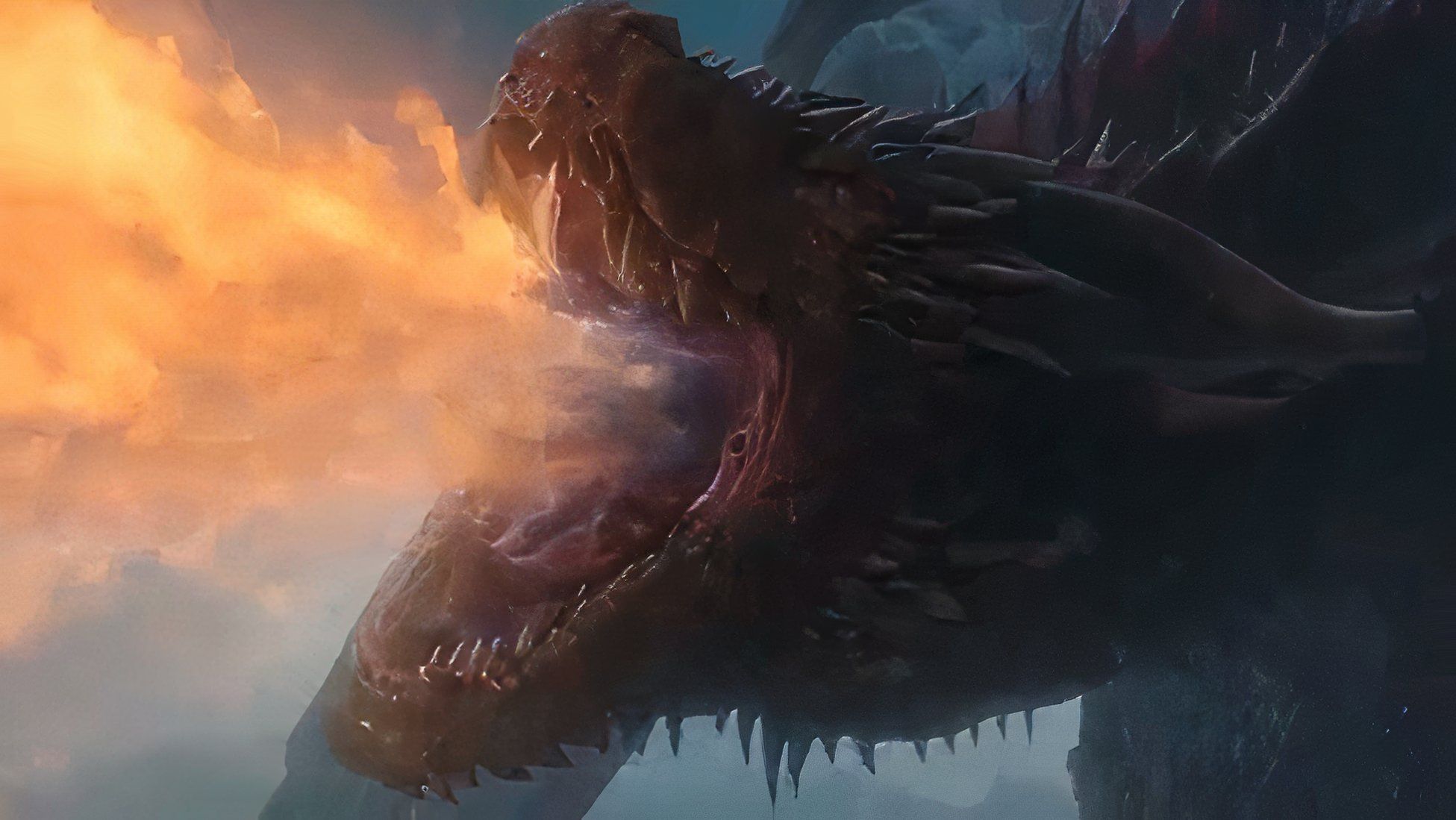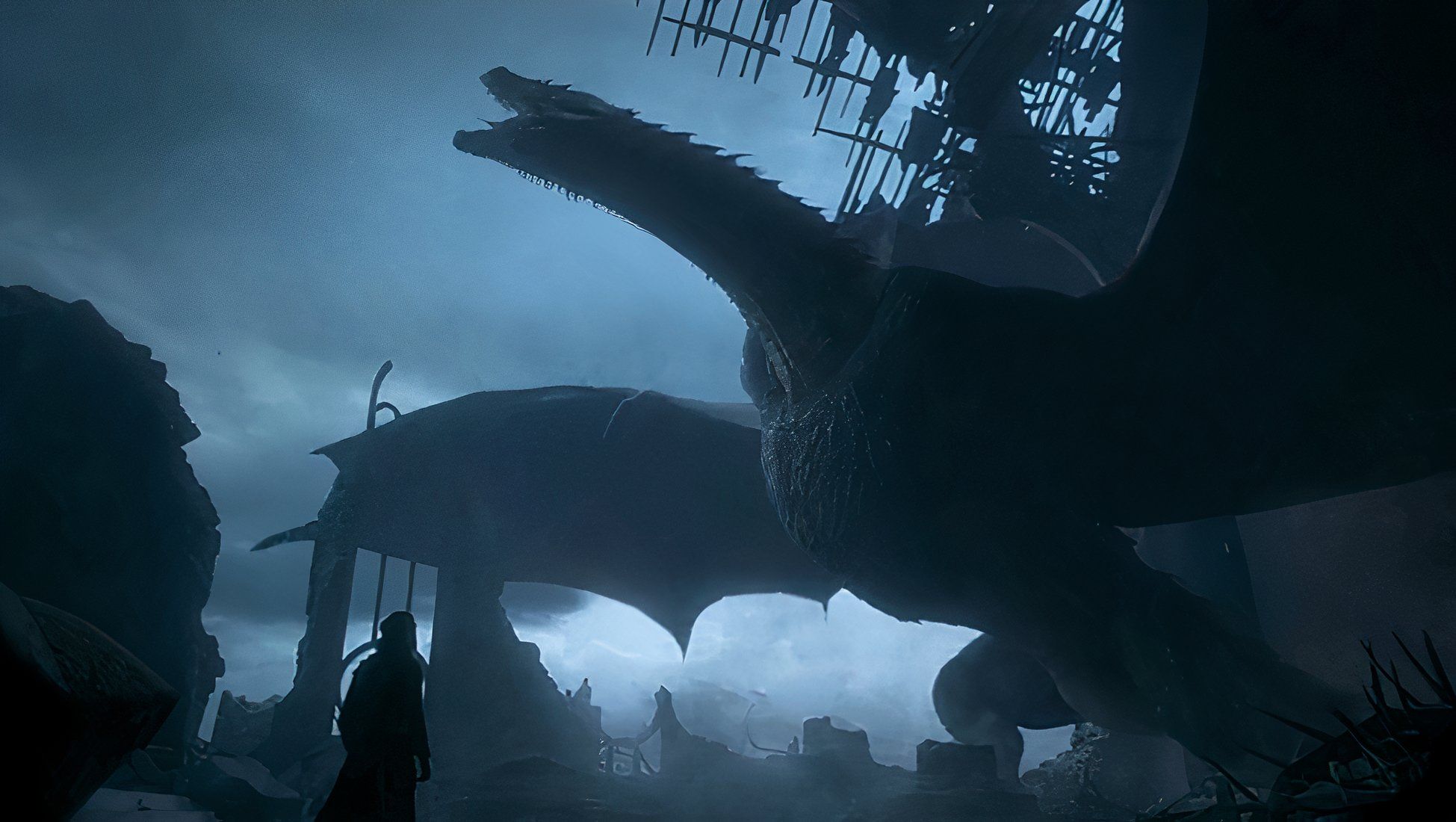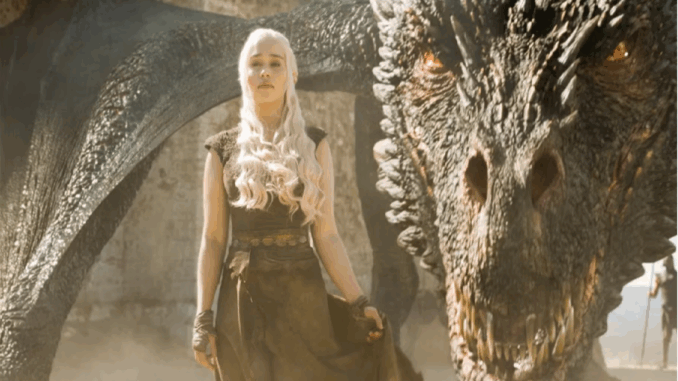
In a heart-wrenching scene that many consider to be House of the Dragon‘s saddest moment, the series revealed a crucial piece of a Targaryen funeral tradition. In fact, this detail may have been hiding in plain sight all along and could explain Drogon’s actions in the controversial series finale of Game of Thrones.
The House of the Dragon Funeral Tradition Revelation
In the first season of House of the Dragon, the audience witnessed the deeply moving funeral of Laena Velaryon, daughter of the Sea Snake and Princess Rhaenys, and wife to Daemon Targaryen. As Laena’s life is on the line during a complicated childbirth, she makes one final, desperate attempt to die as a dragonrider should. She summons the strength to stumble outside where her dragon, Vhagar, rests. With her last breath, she commands: “Dracarys.” Initially hesitant, Vhagar ultimately grants her rider’s final wish, engulfing Laena in dragonfire with Daemon looking on in horror as she undergoes a dragonrider’s death. However, what appeared to be simply a powerful character moment actually revealed something much more significant about Targaryen culture: dragons play a central role in royal Targaryen funeral customs.
In the premiere episode, Rhaenyra’s dragon Syrax burns the funeral pyre of her deceased mother, Aemma, and her infant brother. These scenarios reinforce that dragon fire is the traditional way to send off members of House Targaryen. While Aemma wasn’t a dragonrider, she was half Targaryen through her mother’s side, Daella Targaryen. The ritual makes perfect sense within the mythology of the world George R.R. Martin created. Targaryens have always seen themselves as exceptional, as “blood of the dragon.” Their house words “Fire and Blood” emphasize this connection to their dragon heritage.
The Lingering Mystery of Daenerys’ Body’s Whereabouts
Fast-forward 200 years in the timeline to Game of Thrones‘ controversial finale, and the audience witnesses the heartbreaking death of Daenerys Targaryen at the hands of her lover (and nephew) Jon Snow. After realizing the extent of Daenerys’ descent into tyranny following her destruction of King’s Landing, Jon makes the painful decision to assassinate her, stabbing her through the heart in the throne room of the Red Keep.
This departure left fans with a nagging question: What exactly did Drogon do with Daenerys’ body? Where was he taking her? Was there a purpose beyond simply removing her from the scene of her death? For years, this remained one of the many unresolved loose ends from the rushed final season.
Did Drogon Give Daenerys a Traditional Targaryen Funeral?
This is where the revelation from House of the Dragon suddenly casts the Game of Thrones finale in a new light. If a dragon-fire cremation is the traditional Targaryen funeral rite, then Drogon’s actions suddenly make perfect sense. Drogon, the last of Daenerys’ three dragons, was not simply flying aimlessly with his mother’s body. He was likely taking her to a location of significance, perhaps Dragonstone, the ancestral seat of House Targaryen, or even to Valyria, the homeland of their ancestors before the Doom, to perform this sacred Targaryen funeral ritual.
There’s a beautiful symmetry to this interpretation. Throughout the series, Daenerys frequently refers to her dragons as her children. In the end, her last remaining child would be the one to give her the traditional funeral of her house, returning the Mother of Dragons to fire, from which her dragons were born. This explanation resolves what had seemed like a plot hole or unfinished thread. Rather than being a loose end, Drogon’s departure with Daenerys’ body was the beginning of a funeral journey, one that viewers couldn’t fully appreciate until House of the Dragon revealed this aspect of Targaryen culture.
The Symbolic Significance of Drogon’s Actions
If Drogon’s actions are interpreted through this new cultural lens, the symbolism becomes even richer. By melting the Iron Throne before taking Daenerys’ body, Drogon was not just throwing a tantrum or somehow understanding the metaphorical role the throne played in his mother’s downfall. He was beginning the funeral ritual right there in the throne room.
This connection between House of the Dragon and Game of Thrones is so satisfying because it doesn’t feel forced or like a retcon. The Targaryen funeral custom revealed in House of the Dragon fits perfectly within the established world and its internal logic. Furthermore, it aligns with the notion that dragons are connected to their riders. Throughout both shows the audience witnessed the profound bond dragons share with their riders. They can sense their riders’ emotions, respond to their commands (sometimes even unspoken ones), and mourn when their riders die.
An Ending Worth Revisiting
An interesting question to consider is whether this connection was intentional from the beginning. Did the writers of Game of Thrones always intend for Drogon to take Daenerys to cremate her body according to Targaryen tradition? Given the rushed nature of Game of Thrones‘ final season and the many plot threads that were undeniably left dangling, it’s tempting to assume this is merely a happy accident. However, George R.R. Martin has been involved in the development of both shows, and it’s not inconceivable that this particular piece of world-building was something he had already established in his notes or discussions with the production teams. Whether intentional or not, the connection works beautifully and gives fans a satisfying explanation for a question that had been left open.
Prequels often face criticism for undercutting the mystery or magic of the original work. In trying to explain origins or fill in backstory, they sometimes end up diminishing rather than enhancing what came before. House of the Dragon has provided something rare: A prequel revelation that improves its predecessor. And for all the fans still holding a grudge over that controversial finale, that’s no small gift. It suggests that while Game of Thrones may have stumbled at its conclusion, the rich world it inhabited continues to hold secrets and connections waiting to be discovered.
